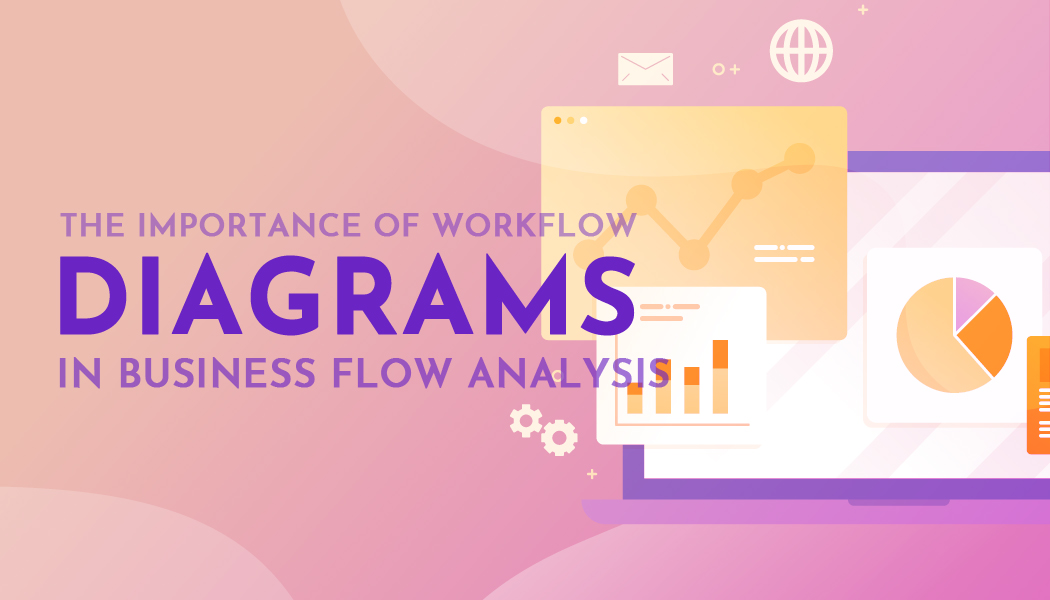The Importance of Workflow Diagrams in Business Flow Analysis
Large business enterprises need a proper strategic approach while running the business successfully without any slip-ups. This strategic approach depends on breaking down the workflow into elementary steps and creating a workflow diagram. Now, what is a workflow diagram?
A workflow diagram is basically a diagram layout of a single process. We use different standardized figures and symbols to represent the overall view of the business process in a simple graphical view which shows the various tasks involved, and the pathways to follow in the business. The advantage of a workflow diagram lies in its simplicity. But not only that, its most significant advantage is that a simple workflow diagram has the ability to incorporate the complexities of a process, and helps you gain clarity.
In order to make a workflow diagram, we need to conduct a thorough workflow analysis and identify the potential weakness areas. A workflow analysis helps you identify the critical areas of your process and how to tackle them. In fact, the workflow diagram software has become quite popular in many industriesas it brings to your readymade workflow patterns of different types, needed for different kinds of business models which make the job easier and more compact.
The design teamscreate a workflow diagramto help the employees learn about their responsibilities and the order of steps of completion of the project. It also helps us determine the different departments involved in the process, and the workflow diagram helps us all the departments stay coordinated.
How did workflow diagrams come into prominence?
As the world grew more technologically sophisticated, the workplace activities started getting more and more complex with different departments needing to collaborate with each other to deliver a requirement.As the workflow started to get more complicated, the scope for quality degradation arose. Thus, quality management became a priority, and the companies realized that the process workflow diagrams genuinely helped in quality management efforts, which substantially helped them identify and tackle the issues in the business process.
Workflow diagram patterns and its application in various industries
Although workflow diagrams were initially used exclusively in manufacturing departments, today, it is used in any process model in any industry as long as there is a systematic flow of steps which repeat on a loop.Here, we share the four most common examples of workflow diagram online.
For example:
-
E-commerce transactions—in this case, the workflow diagram would show the gradual steps taken by a customer as he proceedsalong with the purchasing phase, like locating the necessary product, choosing the perfect option from the collection,order submission, mode of payment, and eventually shipping and delivery steps.
-
Education — A workflow diagram in the educational sector would depict the different steps a student takes while choosing a university, starting from registering for the college, submitting the necessary documents, payment of fees, selecting the choice of specialization, etc.
-
Medical — We can create workflow diagrams which show what steps a patient must for a medical check-up. It starts with booking the appointment slot, either online or offline, payment of fees, the actual appointment with the doctor, undergoing the prescribed tests or buying the prescribed medication, etc.
-
App development — The workflow diagram for app development would involve drawing up the steps needed to build an app, starting from brainstorming, chalking out a definitive plan for implementation, a digital strategy,wireframe development, design and programming, launch of the app, bug fixing, etc.
-
Content Marketing – Content marketing workflow diagrams would involve the creation of a draft of the required article, sending the selection to the editor for approval. If there are rectifications to be made in the draft, the editor sends it back to the writer. Otherwise, the editor proceeds with the article and sends it for marketing setup.
As you can understand, workflow diagrams can be applied to tracethe steps and improve the productivity of any process, and within any industry.
Tools of a workflow diagram
Before you start learning how to create a workflow diagram, one should have a basic knowledgeof the symbols that are used in a workflow diagram.
-
Oval: the ovalfigure is used to denote the beginning and end steps of a process.
-
Rectangle: This figure generally indicates instruction or action steps.
-
Diamonds: these symbols signify decisions. The decision can be yes or no. The process tree takes a turn towards the direction depending upon which decision you make, yes or no.
-
Arrows: Arrows are nothing but connecting symbols. The arrow symbols are the guiding signals regarding which way the process is flowing.
-
Circle: These symbols are connectors; they are deployed when you have to bypass some steps and connect onto a different phase of a separate section. They're connected by arrows.
Components of a workflow diagram
Each element in a workflow diagram illustrates the nature of the flow of the process from one step to another. Each step can be categorized under one of the three parameters:
-
Input element: Input element denotes the labor, capital input, types of equipment used, and information that is required for a step.
-
Transformation: the necessary changes that bring about the production of the output, such as a change in location, ownership, passing from one department to another, etc.
-
Output: This process denotes the end result that has been achieved after the transformation.
Workflow analysis and creating a workflow diagram
These are the following steps that will help you get the hang ofhow to create a workflow diagram:
-
Process selection: You will need to select which process you want to focus on and the information you intend to extract from it. The type of workflow diagram to be chosen also depends on your audience. It is also useful to know whether the workflow diagram will show a process the way it is presently operating or whether the process will be implemented in the future.
-
Defining the starting and End Points: It is always useful to have a clear starting point and an end goal.
-
Assembling the necessary information: You will need to gather all the essential information required to ensure that you make the workflow diagram as accurately as possible. Focus on the critical activities involved and the person or people who are in charge of seeing that through.You should have all the information regarding the process timelines, potential tailback issues, and possible improvements.
-
Waste Elimination: You then decide on how to act on the information at hand. There are steps which will increase productivity, fasten up the process, and make the process more efficient. Similarly, there will be steps that slow up your business, increase the cost of the process. These are not desirable for your operation, and you need to streamline these issues for the best output.
-
Constructing the Workflow Design:Eventually, you utilize those data at hand to build the appropriate workflow diagram using a pen, or an online diagramming tool. The whole point of making a workflow diagram is that it is easy to understand, simple to use, easily editable.
-
Result Analysis: Once the workflow diagram is ready, it is essential to deploy the process in real-time. It will help you weed out the discrepancies, zero in on the bottlenecks. All this will help to change the workflow diagram accordingly, and this will help in increasing productivity in the long run.




